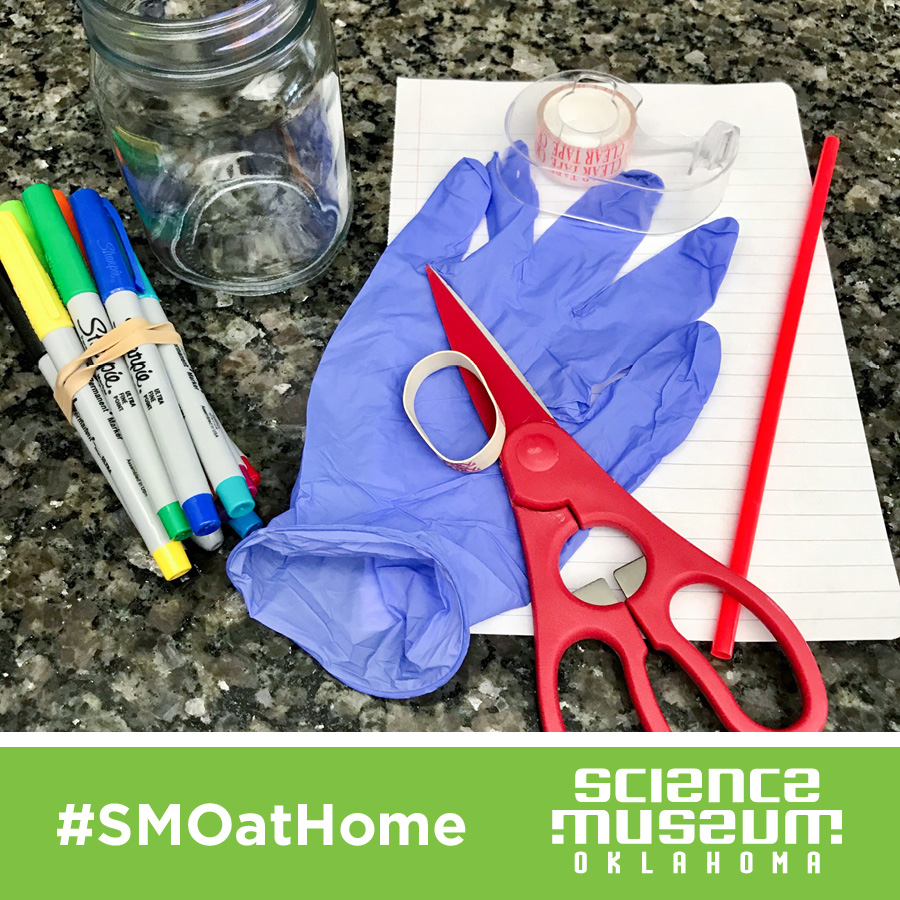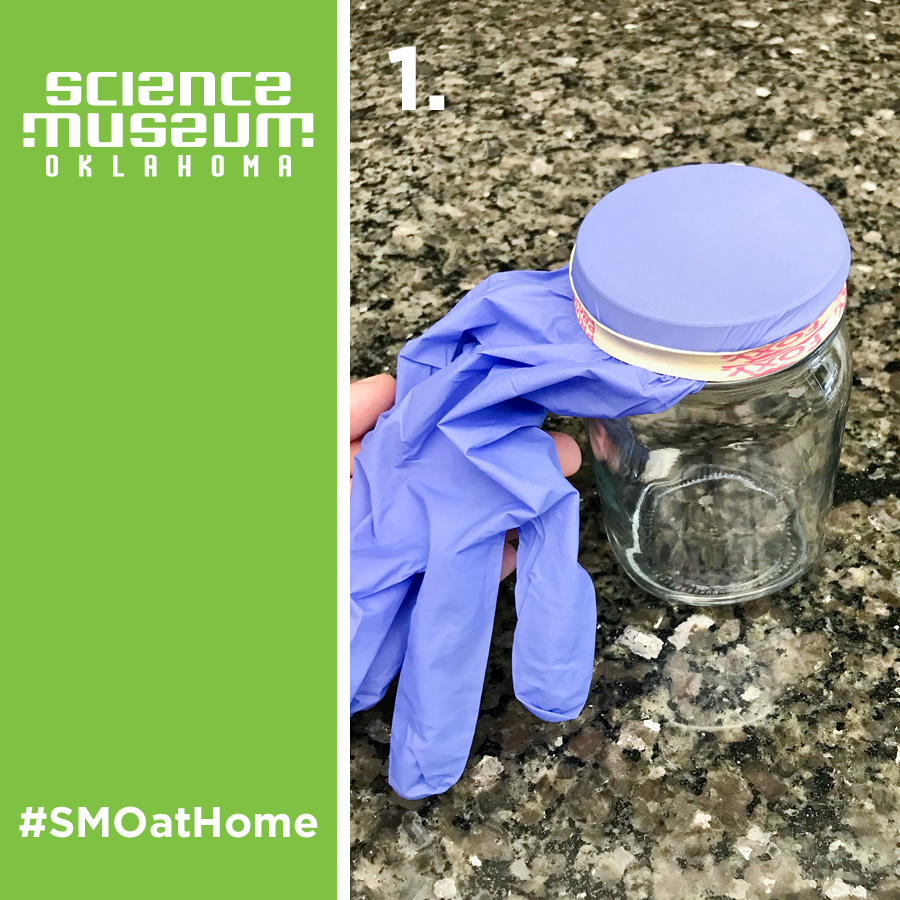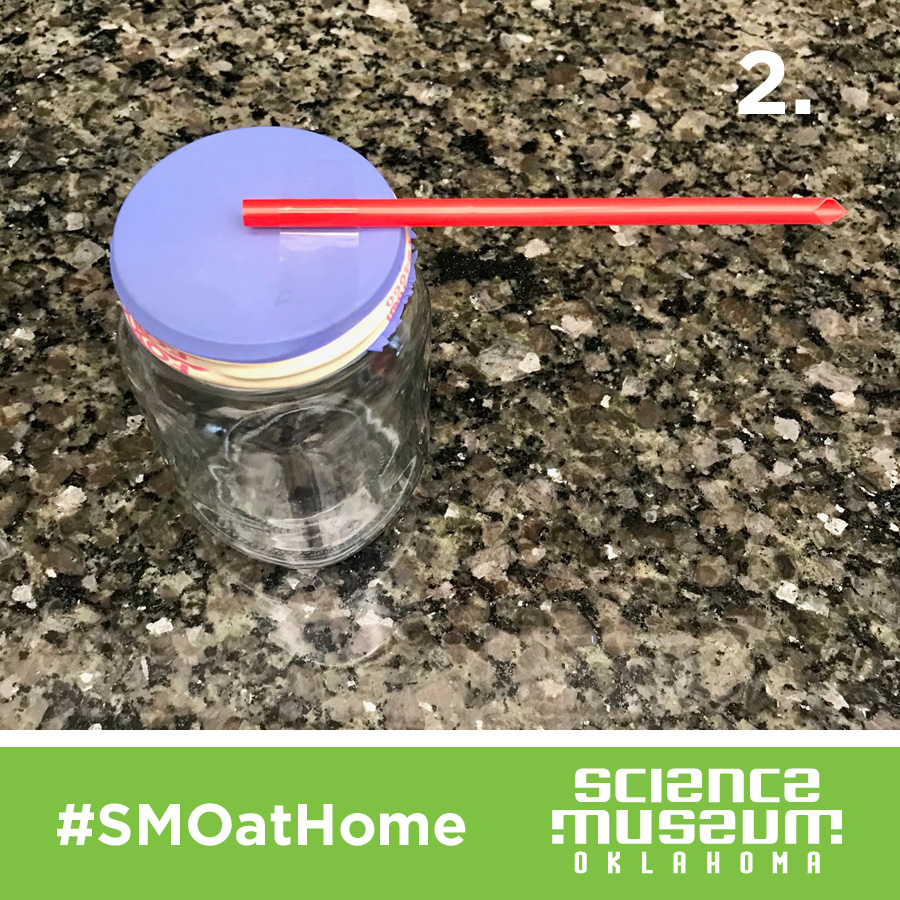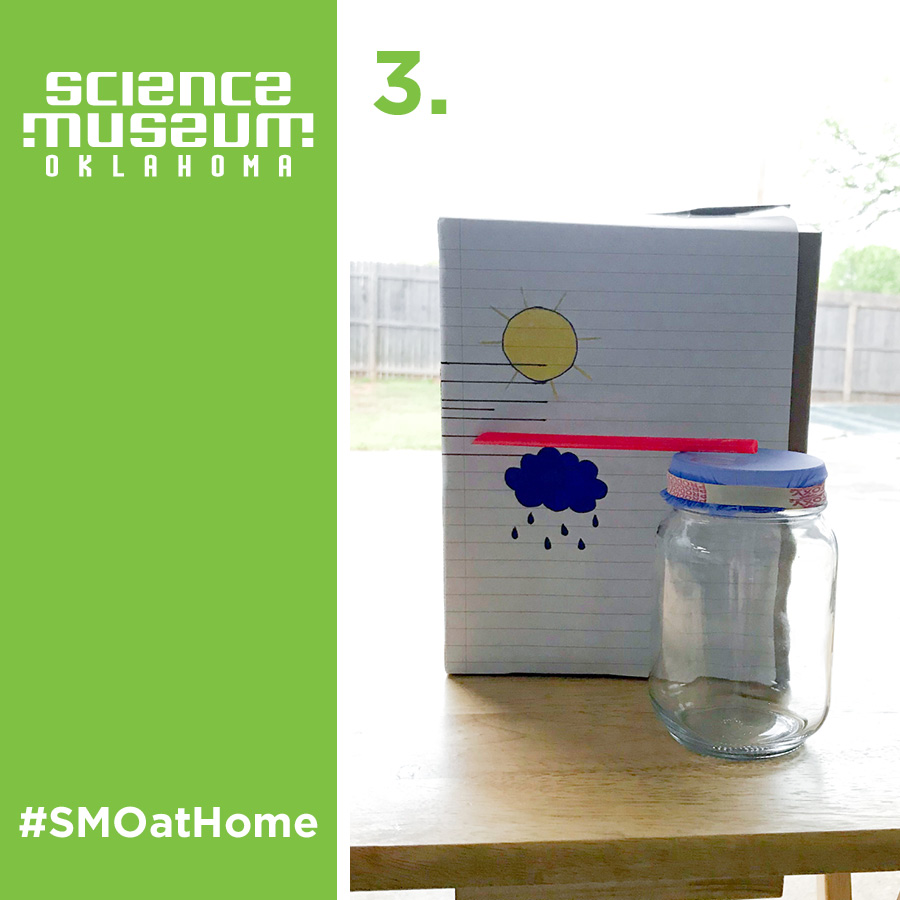Try This: Make a Barometer
A barometer is a device that can measure air pressure. If air pressure, or atmospheric pressure was not cool enough — being able to build an instrument that can tell us about the atmospheric pressure around us, makes it that much cooler! The first barometer was invented in Florence, Italy in 1644 by Evangelista Torricelli. There are several ways to make a barometer, and most likely you have what is needed in your home already.
In Oklahoma we’re all too familiar with storms that come on quickly with seemingly little warning. When this happens, it corresponds with a drop in air pressure. Modern barometers monitor this air pressure and can provide essential weather monitoring, information for forecasting weather changes, and of course much needed warnings.
This atmospheric pressure is higher on sunny days and lower on stormy days. We can monitor the changes in air pressure that come with different weather patterns by making a barometer out of common household items.
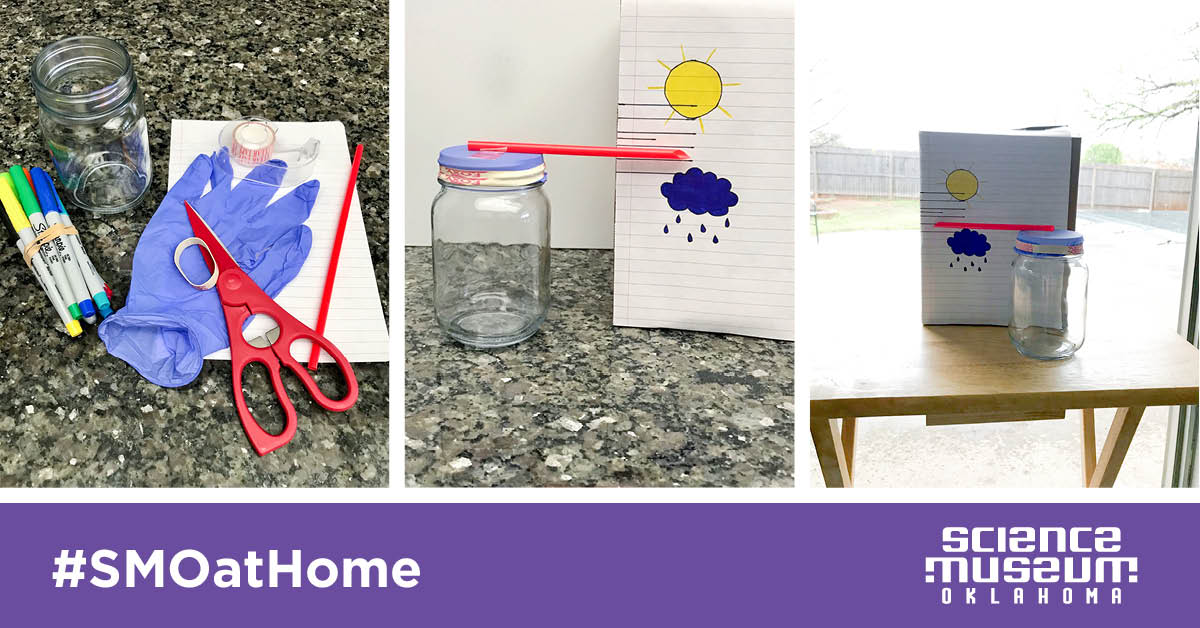
Here’s what you’ll need:
- Glass jar
- A balloon, or in this case a latex glove
- Rubber band, in this case taken from the broccoli, or a hair tie
- Plastic drinking straw, this one came from an old take out order, or similar lightweight item
- Markers
- Paper
- Tape
- Scissors
Here's what to do:
1. Stretch the wrist of the glove over the mouth of the jar. Secure it with a rubber band. Pull it taught on the top so there are no dimples or wrinkles. Cut away the excess glove. If you’re using a balloon, simply cut away the part that you would normally blow into. This should give you enough stretch to cover the top of the jar.
2. Cut the plastic drinking straw at an angle. This will be used as a pointer. Tape it to the center of the glove. It’s important that the end of the straw is in the center.
3. On a piece of paper, draw a picture of the sun shining toward the top and a storm cloud toward the bottom end. Mark the location where the straw is currently at rest (this should be toward the middle.)
Observe the barometer over time. Does it move a little or a lot? Can you tell if it’s sunny or rainy? You may want to mark days that the straw was pointing very high or very low.
What's Happening
If the pressure inside the jar is greater than the air pressure around it, the dome will rise outward to the greater air pressure inside. This will cause the straw to go down. If the pressure inside the jar is less the outside air, the covering of the jar will face inward. This will cause the straw to point up!




